What Animals Live in the Pacific Ocean?
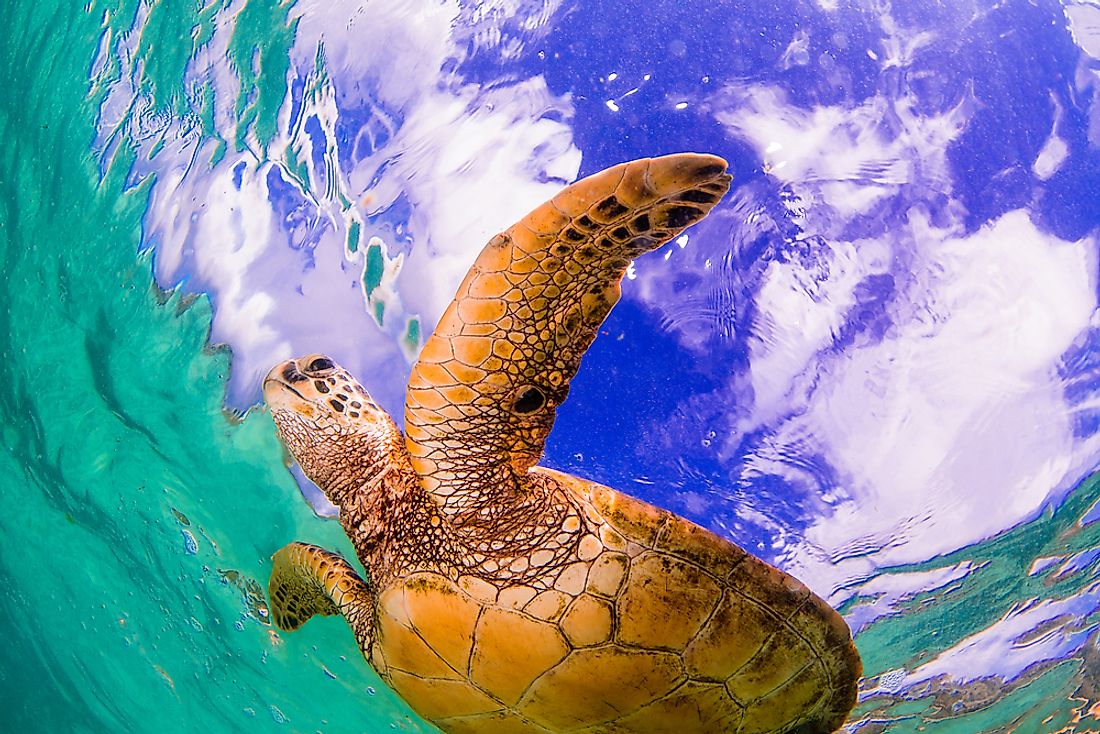
The Pacific Ocean is the largest ocean in the world and occupies an area of 62.46 million square miles about a third of the earth’s surface area. The ocean depth ranges from shallow waters near coastlines to the Mariana Trench which plunges 35,797 feet below the ocean’s surface. Due to its enormous size, the Pacific Ocean is home to a wide array of marine creatures, some of which are found nowhere else on earth.
15. Penguins
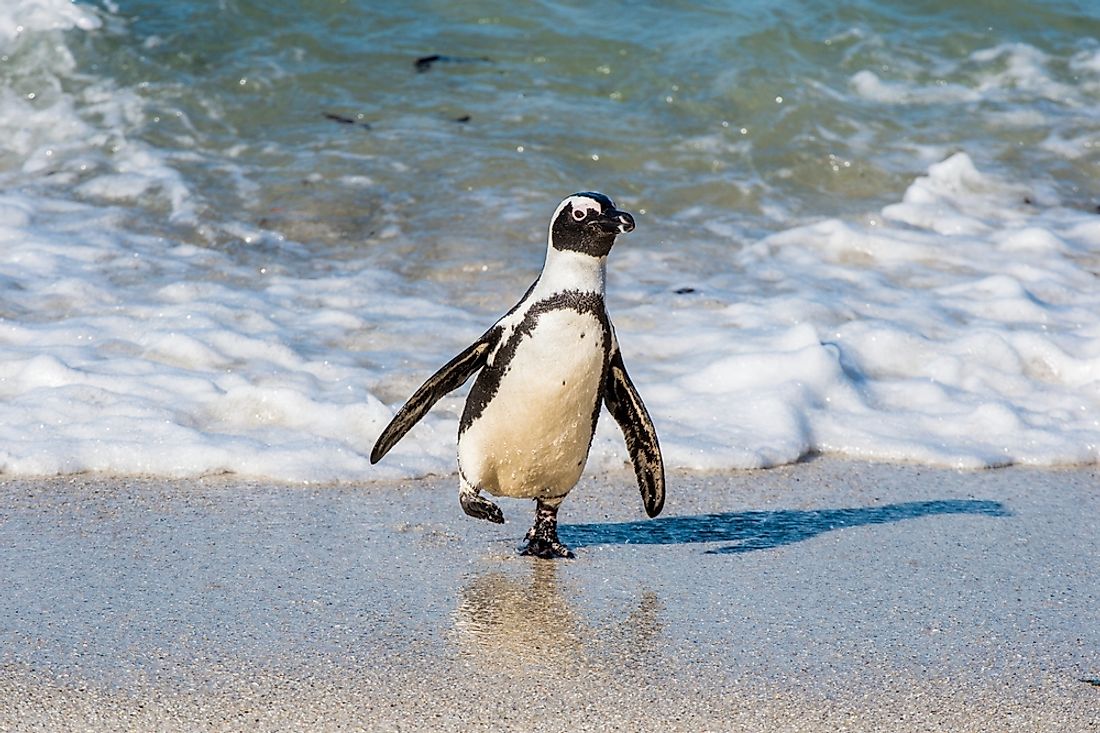
The Pacific is home to numerous species of penguins which include the Galapagos Penguin, the Humboldt Penguin, the Magellanic Penguin, the Rockhopper Penguin, the Yellow-Eyed Penguin, and the Crested Penguin. These penguins vary in size with the smallest being 2.2 pounds in weight and has a height of 15.7 inches while the largest is 75 pounds in weight and has a height of 43 inches.
14. Dugong
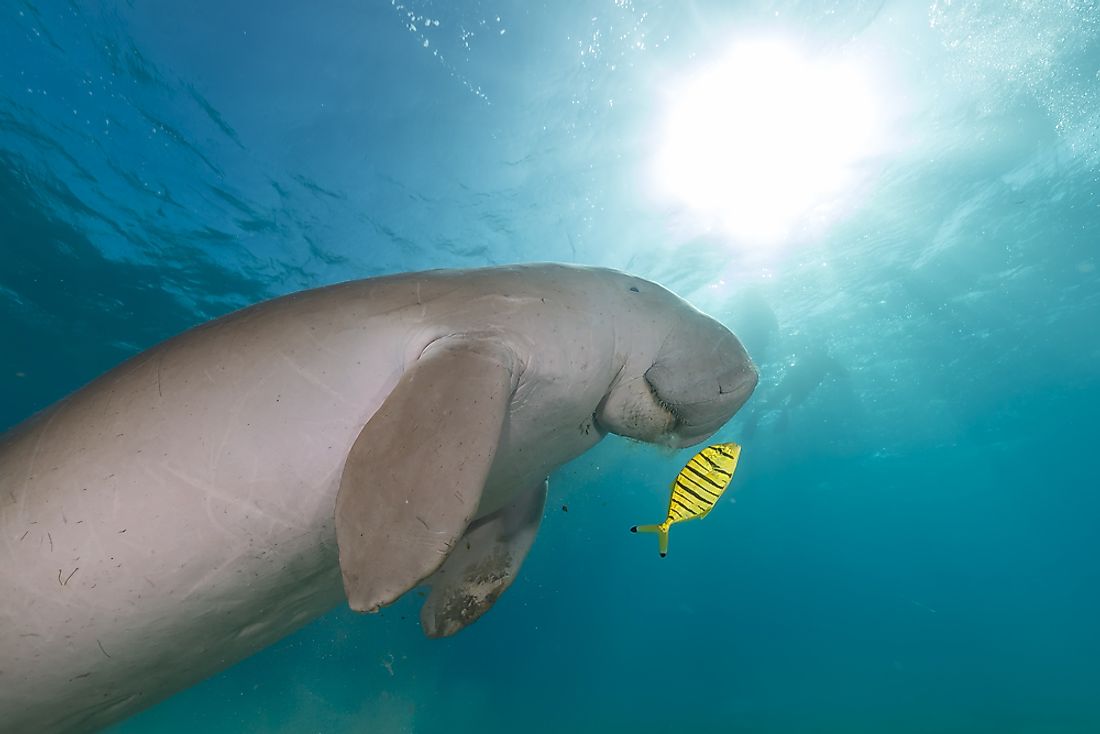
The Dugong is a marine mammal which closely resembles the manatee. Dugongs are strictly herbivores and spend most of their time feeding on sea grass found on the sea floor. Adult dugongs grow to attain a weight of 926 pounds and a length of 9.8 feet, but a few individuals have been known to grow to weigh over 2,000 pounds and attain a length surpassing 13 feet. These large marine mammals are found in the warm regions of the Western Pacific.
13. Killer whale
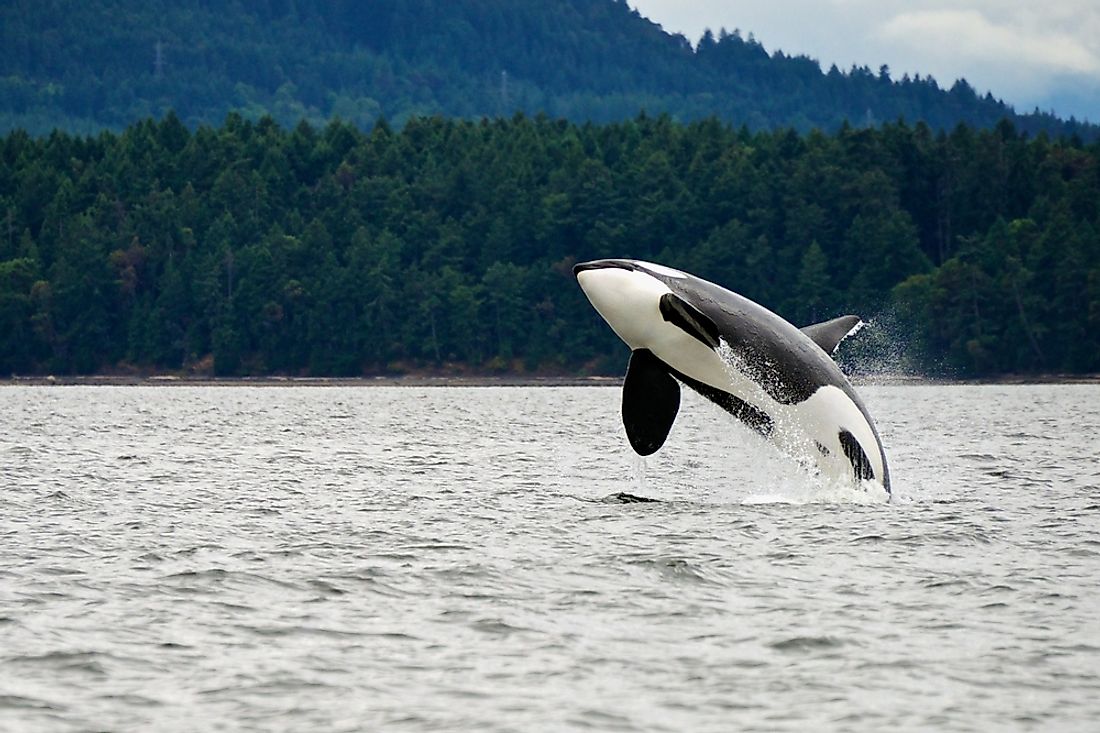
The killer whale is a typical resident of the Pacific Ocean and is the ocean’s apex predator. Also known as orca, the killer whale is a member of the dolphin family and is the largest of them all. Killer whales exhibit sexual dimorphism with males being significantly larger than females. Adult males grow to attain a body length of 26 feet and a weight of 6.6 short tons. However, the largest specimen in history had a recorded weight of 11 short tones and a body length of 32 feet. The highest density of orcas in the Pacific Ocean is found in the northern Pacific near the Aleutian Islands.
12. Humpback whale
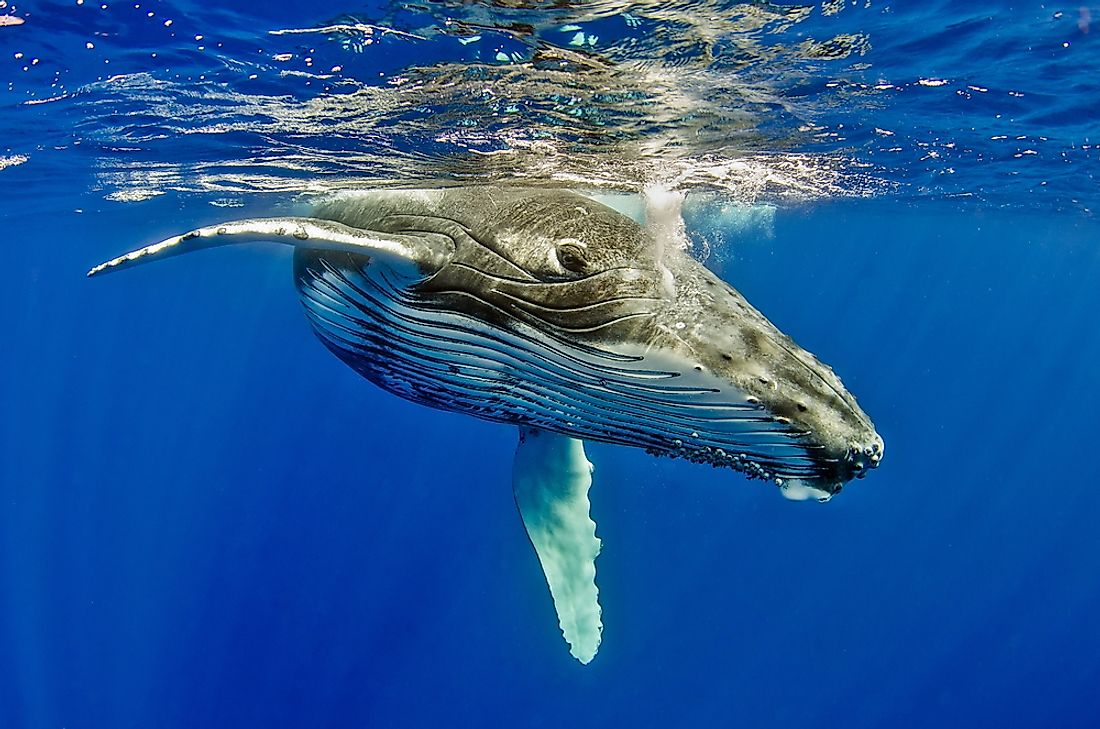
The Humpback Whale is another marine mammal found in the Pacific Ocean, mostly in large concentrations in the North Pacific. The humpback whale is a baleen whale and as such feeds primarily on krill. Female humpback whales are significantly larger than their male counterparts with adult females growing to an average weight range of between 28 short tons and 33 short tons and an average body length of 52 feet. The humpback whale has distinctly large pectoral fins. These whales are migratory mammals and can cover 16,000 miles annually in their migrations.
11. Fur seal
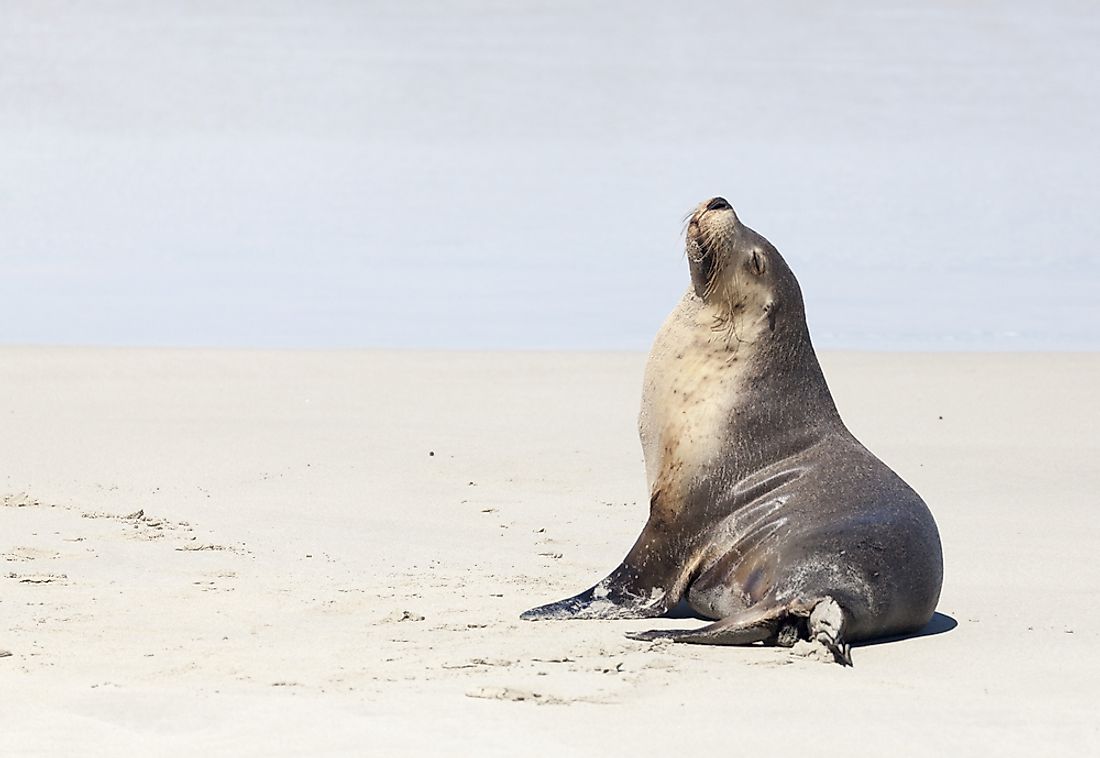
"Fur Seal" is the term given to nine species of seals in the sub-family Arctocephalinae. These seals have a characteristic dense underfur from where they get their name. The fur seal is closely related to the sea lion, and the two share several characteristics including the fact that both have external ears. Fur seals grow to attain a weight of 500 pounds and a body length of 79 inches. However, some individuals develop to reach a maximum weight of 660 pounds. Fur seals are exclusively found in the northern hemisphere.
10. Elephant seal
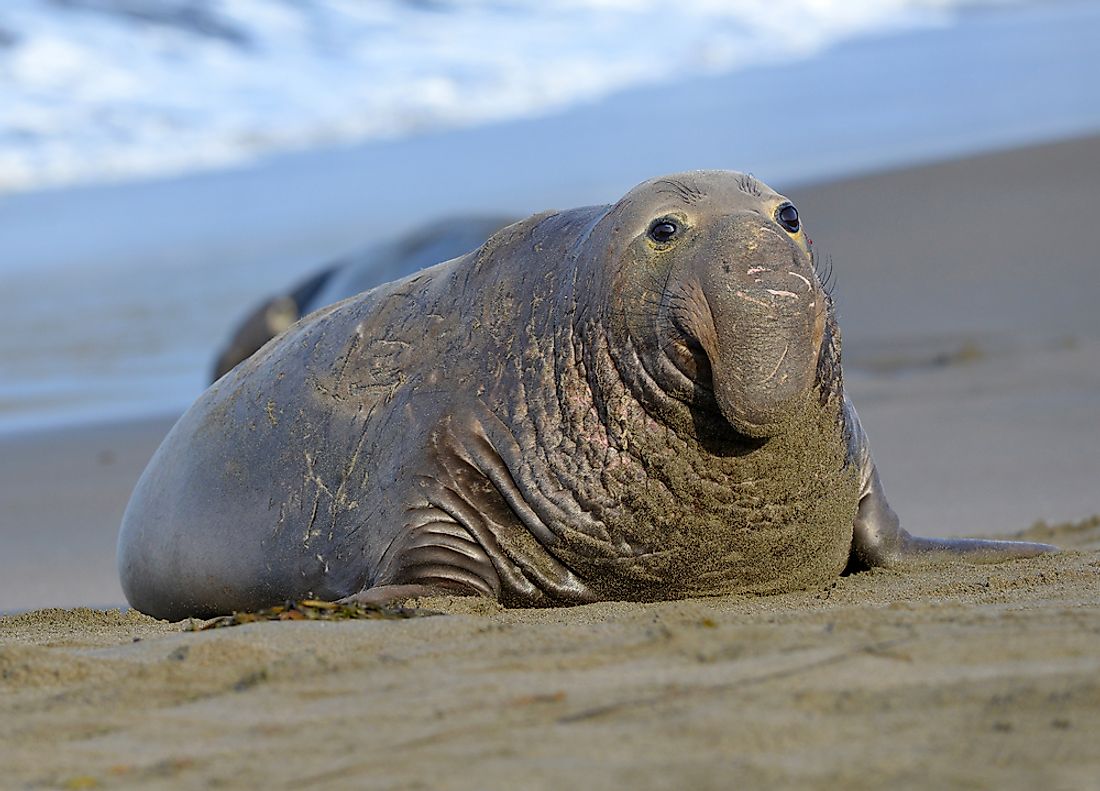
The Elephant Seal is the biggest seal species in the Pacific and exists in two types the northern elephant seal and the southern elephant seal. The Northern elephant seal is found in the northern Pacific along the North American coast. This enormous marine mammal exhibits sexual dimorphism with adult males being far bigger than females. An adult elephant seal has an average weight of 2000 pounds with few bulls growing to be as big as 6,000 pounds.
9. Manta ray
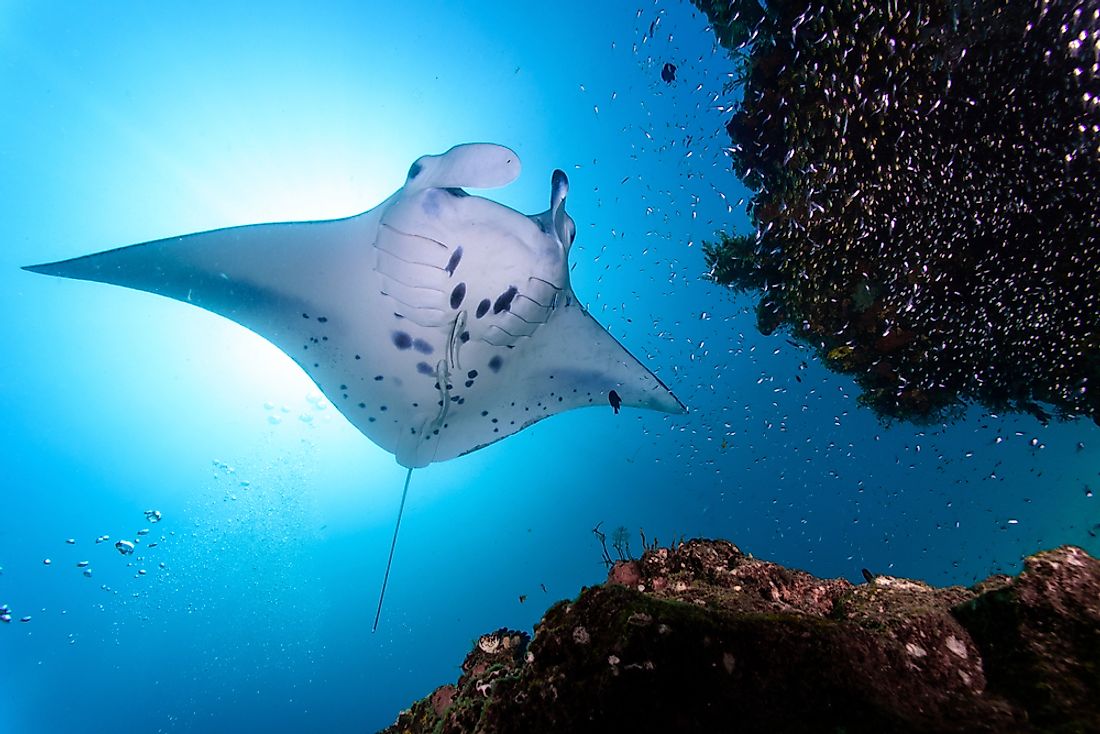
The Northern Pacific is home to the largest of all rays, the Manta Ray. The manta ray is found around coral reefs where it hunts small fish and tiny crustaceans. Adult manta rays grow to attain a body length of 29.5 feet and an average weight of 2,000 pounds. The ray is a solitary animal and is surprisingly docile despite its immense size. It is preyed on by big sharks and killer whales.
8. Sea otter
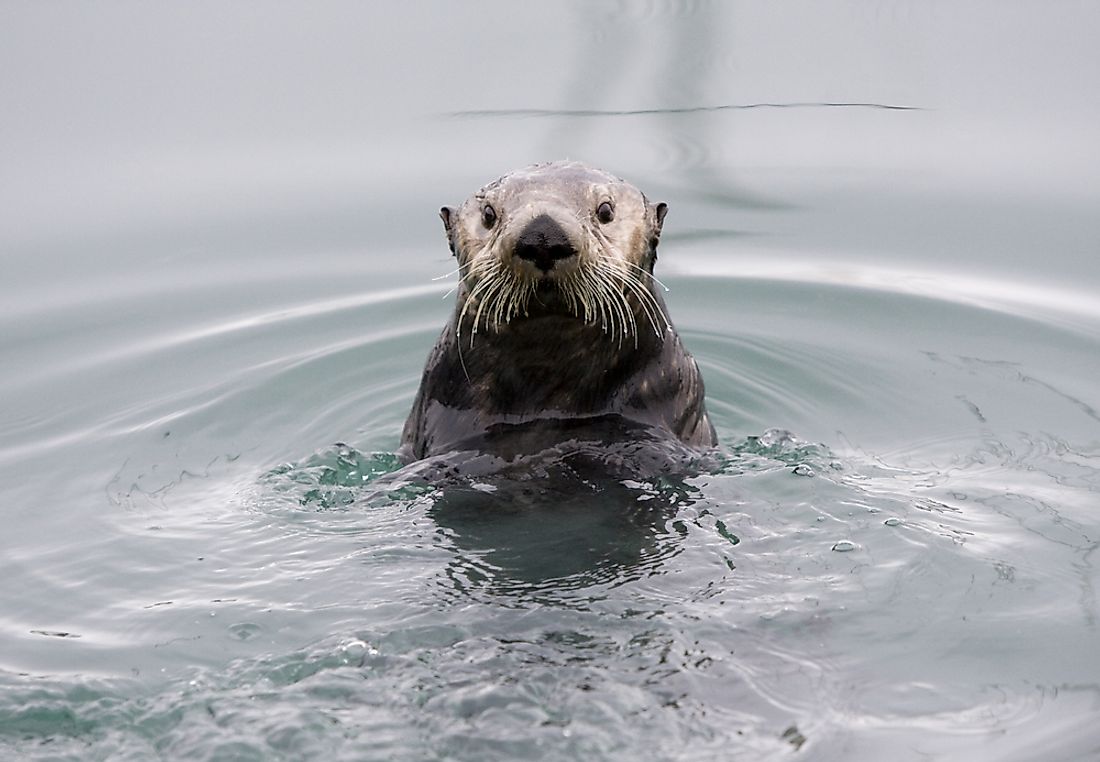
The sea otter is a popular resident of the northern Pacific Ocean with high populations found in northern and eastern Pacific coast. The sea otter has a relatively small size compared to other marine mammals with adults having a maximum weight of 100 pounds and a body length of 59 inches. It is still the heaviest species of the family “Mustelidae.” These marine mammals are omnivores feeding on small marine animals and seaweed.
7. Sea turtle
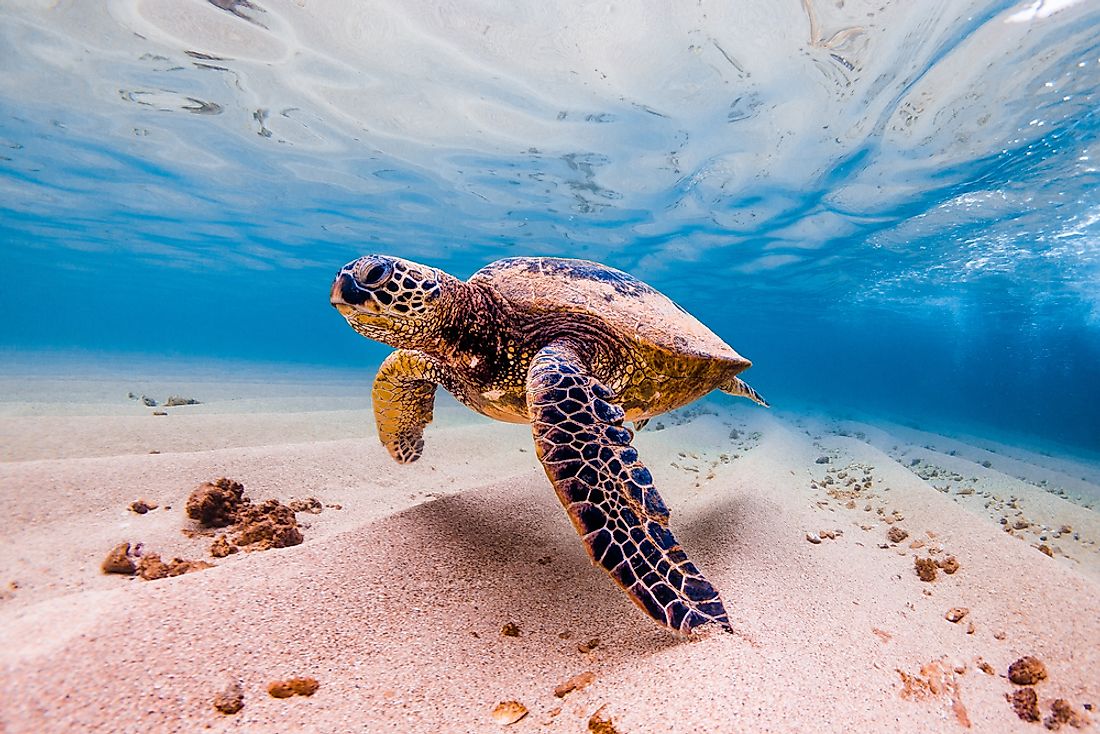
Sea turtle is the collective term used to describe seven species of aquatic shelled reptiles. These species include; the leatherback, the hawksbill, the green turtle, the flat back, the loggerhead, the olive ridley and the Kemp’s ridley. The leatherback turtle is the largest of all sea turtles with adults attaining an average weight of 1,500 pounds. The sea turtles are found in the tropical regions of the Pacific, but individual turtles lay their eggs in the same breeding grounds located on beaches throughout their lives.
6. Sea slug
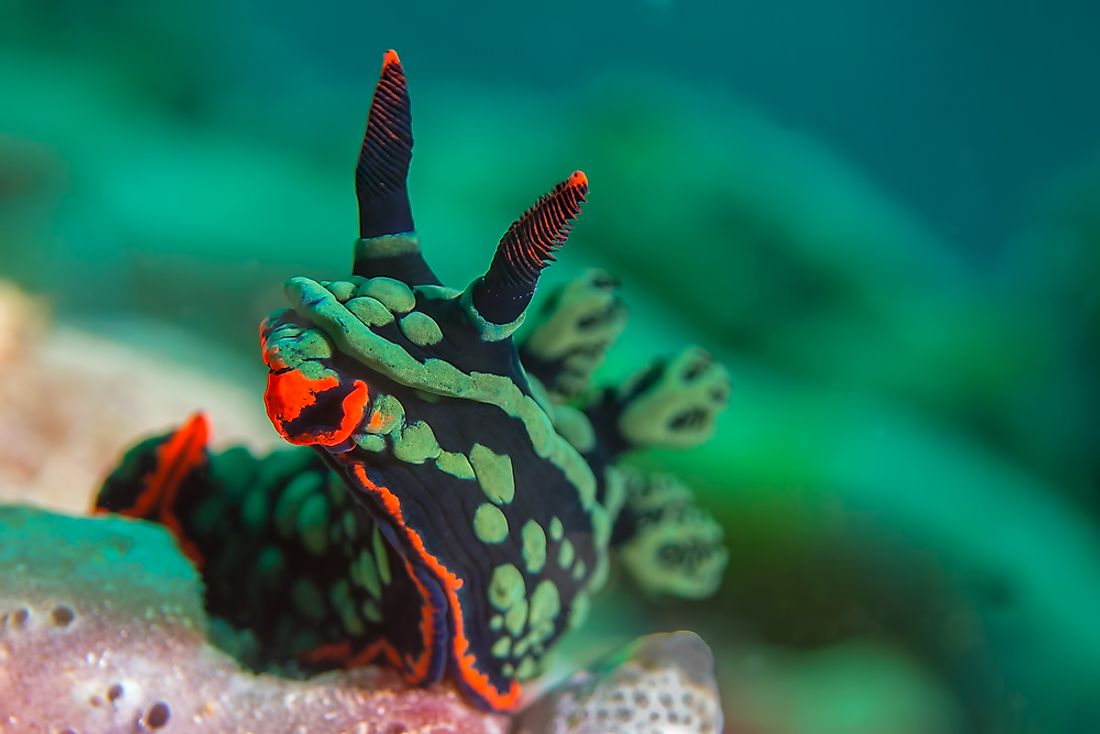
Sea slug is the term used to refer to marine invertebrates known as nudibranchs as well as few gastropods which closely resemble terrestrial slugs. These sea slugs are primarily found on coral reefs and exist in different forms and sizes, but most are partially translucent. Most sea slugs have feather-like structures on their backs which are used as gills. Sea slugs are carnivores, and they prey on jellyfish, plankton, and anemones.
5. Octopus
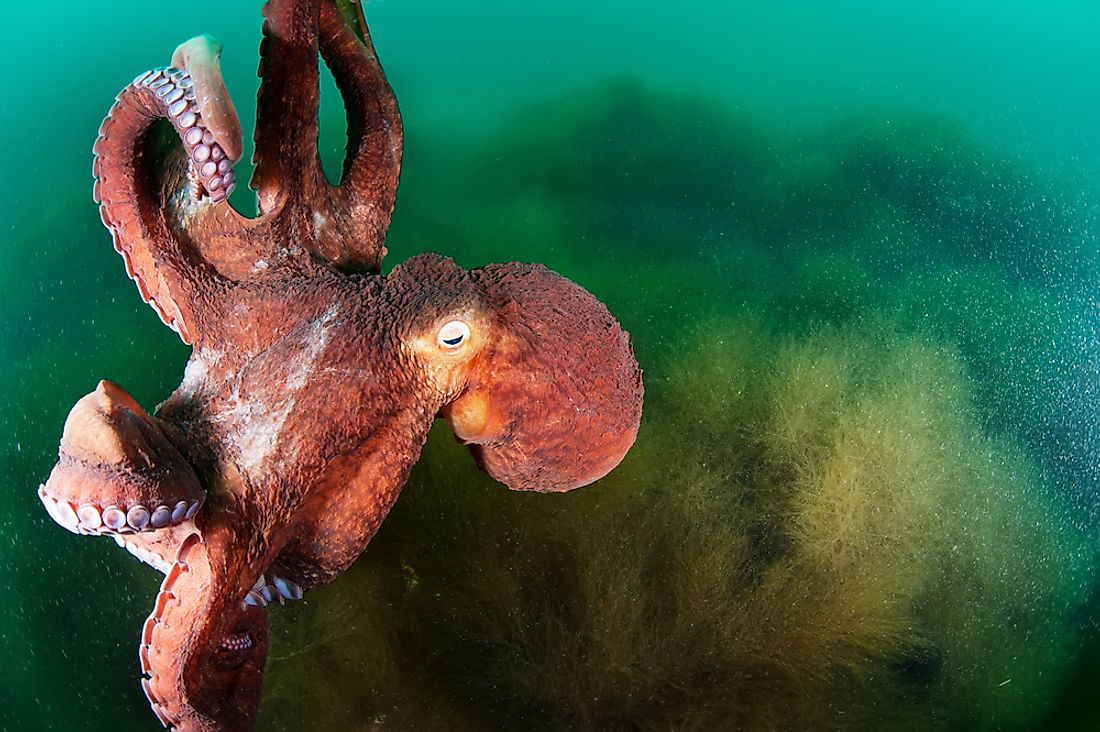
The octopus is one of the most abundant cephalopods in the Pacific Ocean with different species being found in various parts of the ocean. The octopus has one of the largest brain-to-body ratios in all invertebrates, and it also has an extensive and complex nervous system. The octopi species vary in size with the largest being the Giant Pacific Octopus which can grow to attain a body weight of 150 pounds.
4. Giant squid
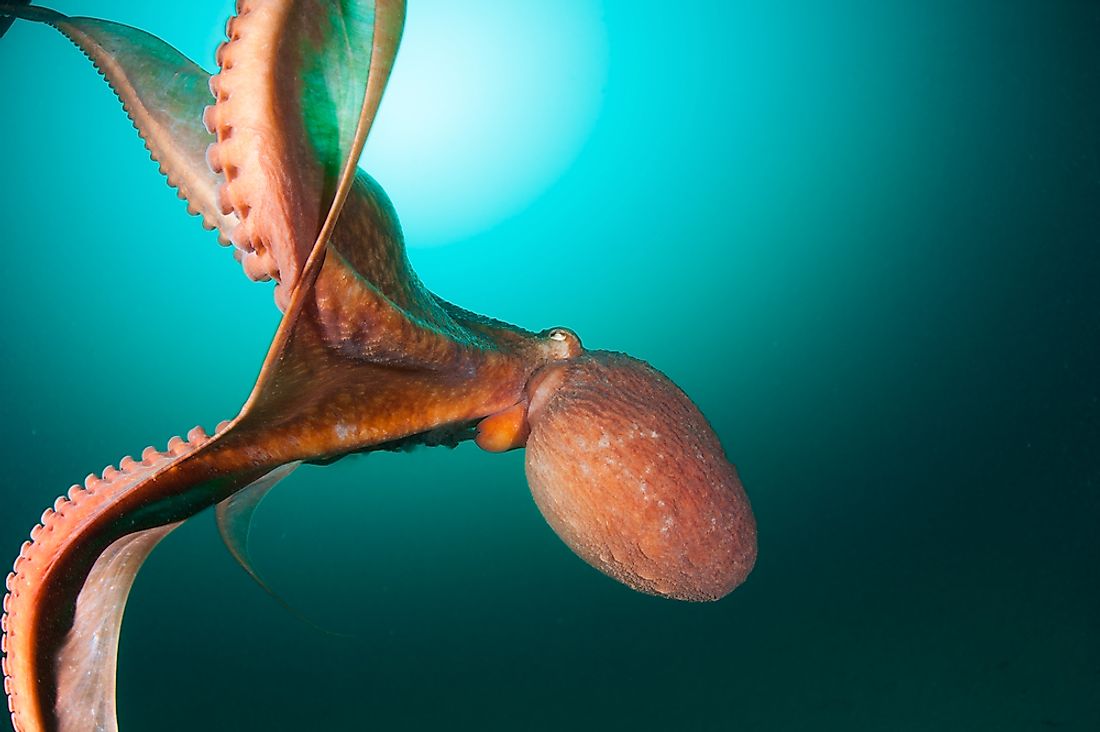
The giant squid is the name given to members of the family Architeuthidae. The giant squid is one of the most elusive of all Pacific marine creatures with extremely few live specimens being caught. The giant squid is one of the largest invertebrates in the world (second to the larger colossal squid) with adults growing to be as long as 43 feet with females being relatively larger than males. Giant squids are found in the Northern Pacific near Japan.
3. Pacific White sided dolphin
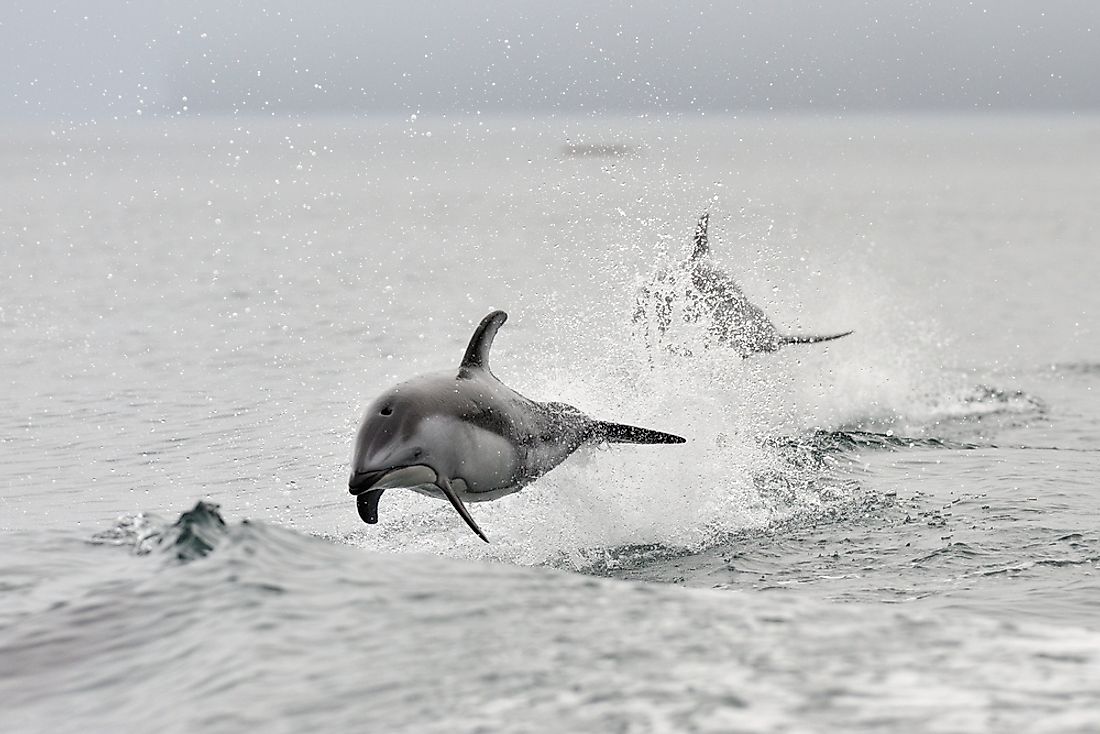
The Pacific white-sided dolphin is a dolphin found in the Northern Pacific. The Pacific white-sided dolphin has a gray back and a creamy white belly and neck. Adult males grow to 440 pounds in weight and 8.2 feet in length while adult females grow to 330 pounds in weight and 7.5 feet in length. These dolphins are quite agile and are only preyed on by killer whales.
2. Stellar sea lion
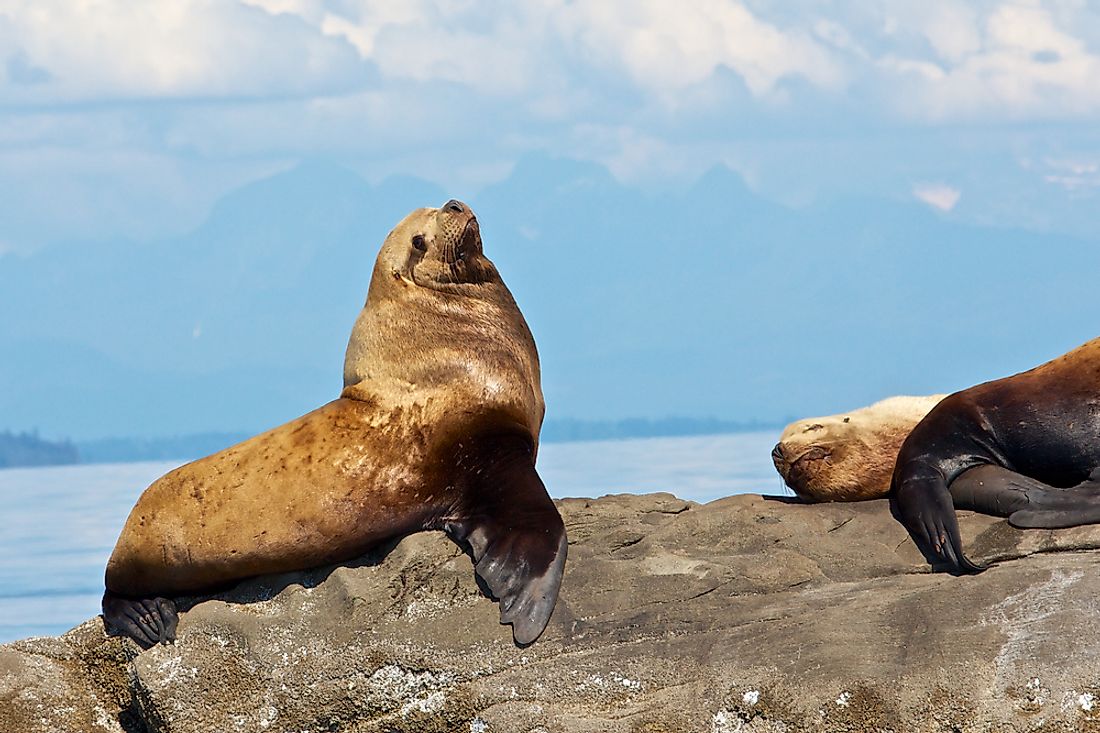
The Stellar sea lion is the largest member of the Otariidae family with males growing to attain an adult weight of 1,199 pounds and an average body length of 9.8 feet. The species exhibits sexual dimorphism with males being larger than females. Male stellar sea lions have a robust neck which is covered by a mane resembling that of male lions. These marine mammals are found in the Northern Pacific Ocean.
1. Hammerhead shark
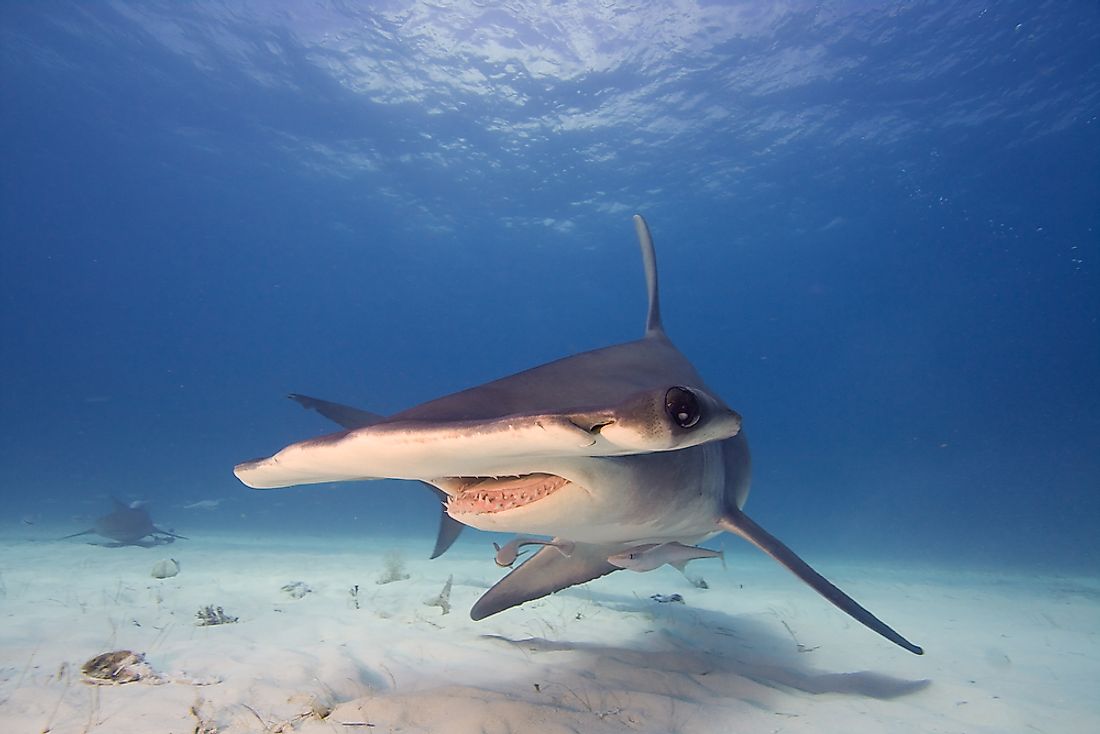
The hammerhead shark is one of the most common marine creatures of the Pacific Ocean. These sharks are easily identifiable due to the shape of their heads which resemble a hammer. This distinct shape of their heads enables the shark to have a 360-degree vision. Adult sharks grow to reach a weight of 1,278 pounds and a body length of 19.7 feet.







